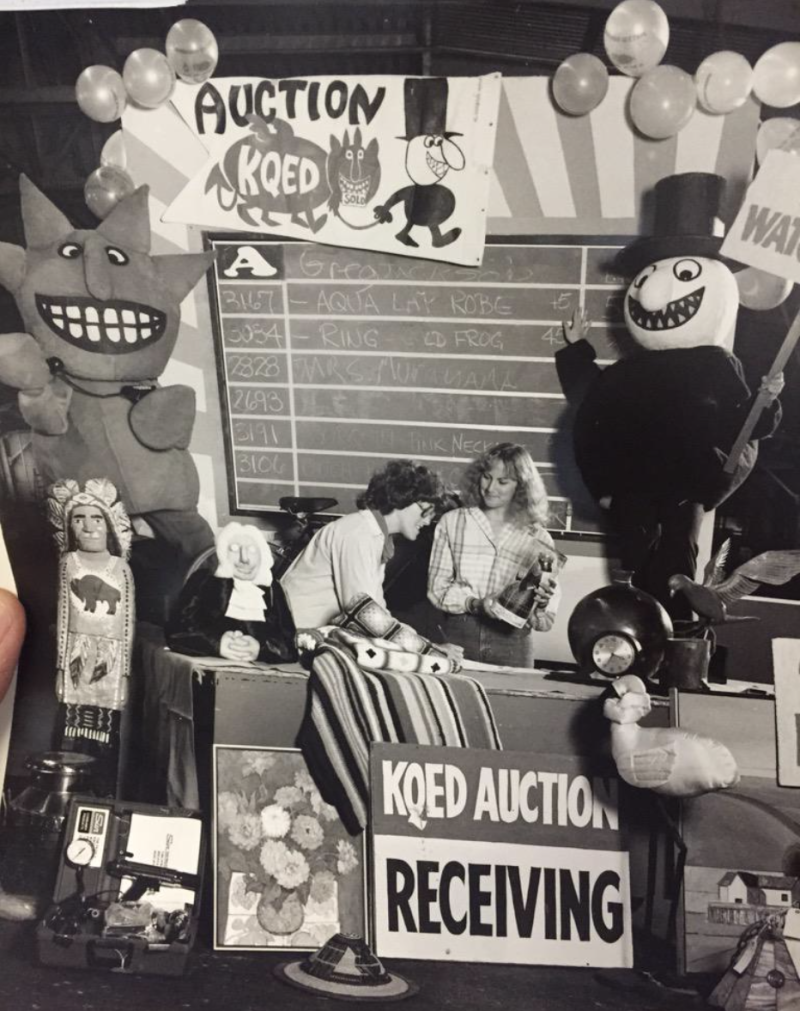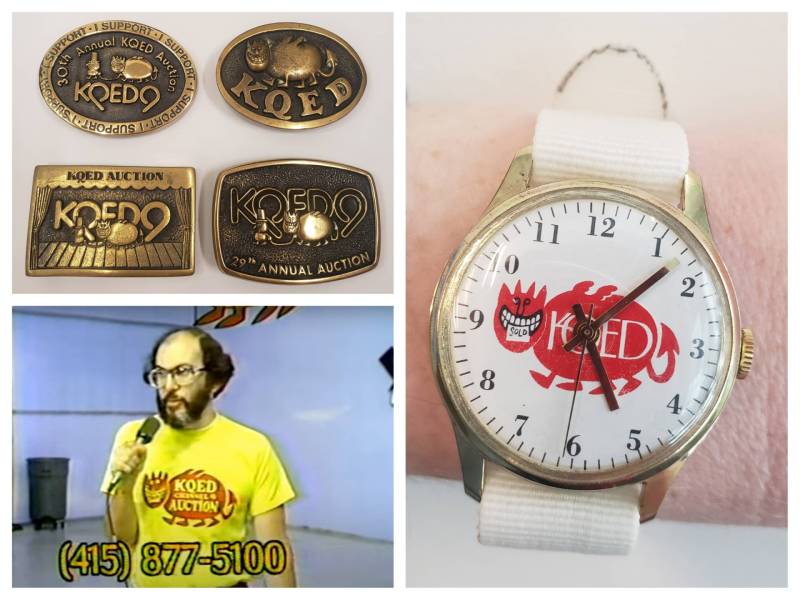If you’re an old-school KQED viewer, you might remember Qued and Phred — the very strange mascots of the now-defunct annual KQED auction. Qued is a mischievous-looking giant red devil creature who walks on all fours and often carries a “sold” sign in his mouth. Phred, who can usually be seen leading Qued on a leash, is what would happen if the Monopoly man had a baby with the Babadook.
For reasons that are fairly unfathomable now, these two “Monster Mash”-looking weirdos were an integral part of mainstream KQED culture between 1960 and 1990. Qued and Phred’s images adorned T-shirts, belt buckles, advertisements and studio backdrops. Now and again, we as a TV channel even made volunteers climb into mascot costumes in Qued and Phred’s likenesses.
“I remember the first time I saw [the Qued costume],” says former auction worker Marianne Fu-Petroni. “It was a real big, human-sized costume. I was like ‘Somebody gets into there?!’ You know, you can’t really keep it clean after so many years…”

The design for Qued and Phred arrived in 1960, five years after the first live auction was launched to keep KQED’s lights on. The characters came into being when a volunteer named Frannie Fleishhacker (wife of prominent Bay Area businessman Mortimer Fleishhacker) decided to seek out an eye-catching logo for the auction. Frannie reached out to Oakland advertising company Foster & Kleiser to see if anyone would be willing to create a design, gratis.





